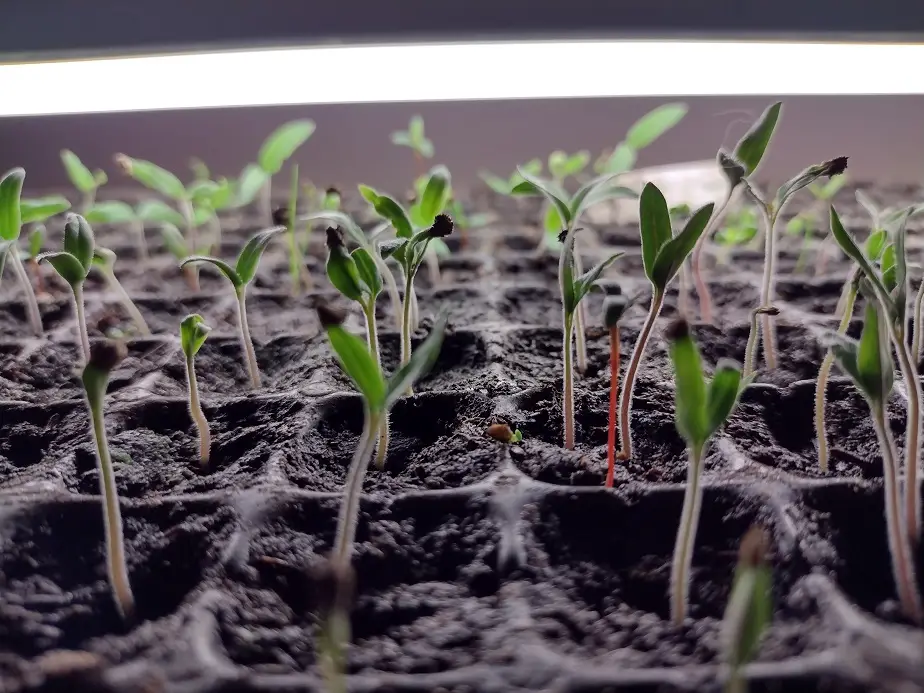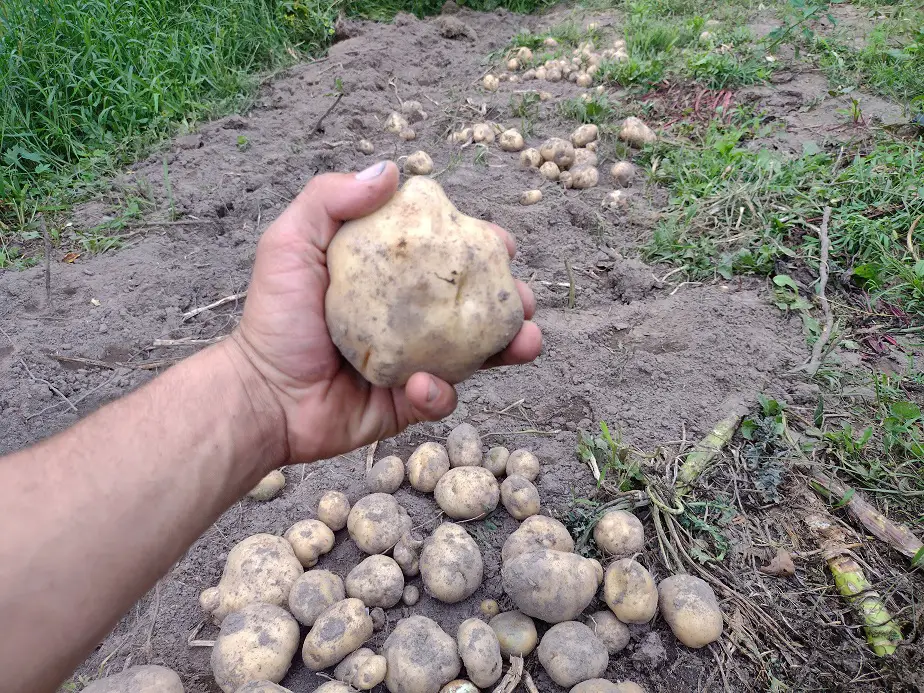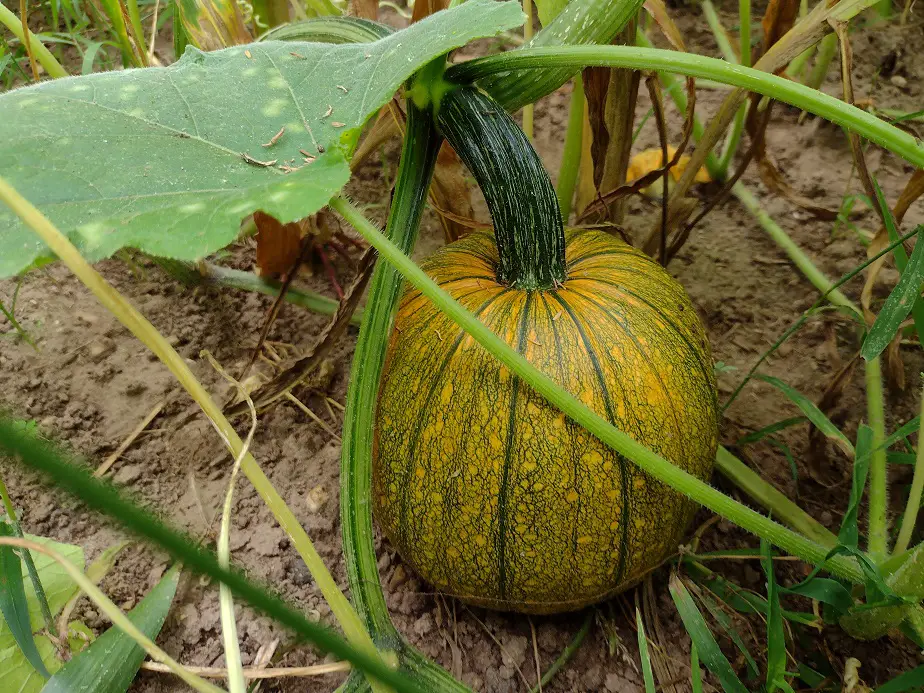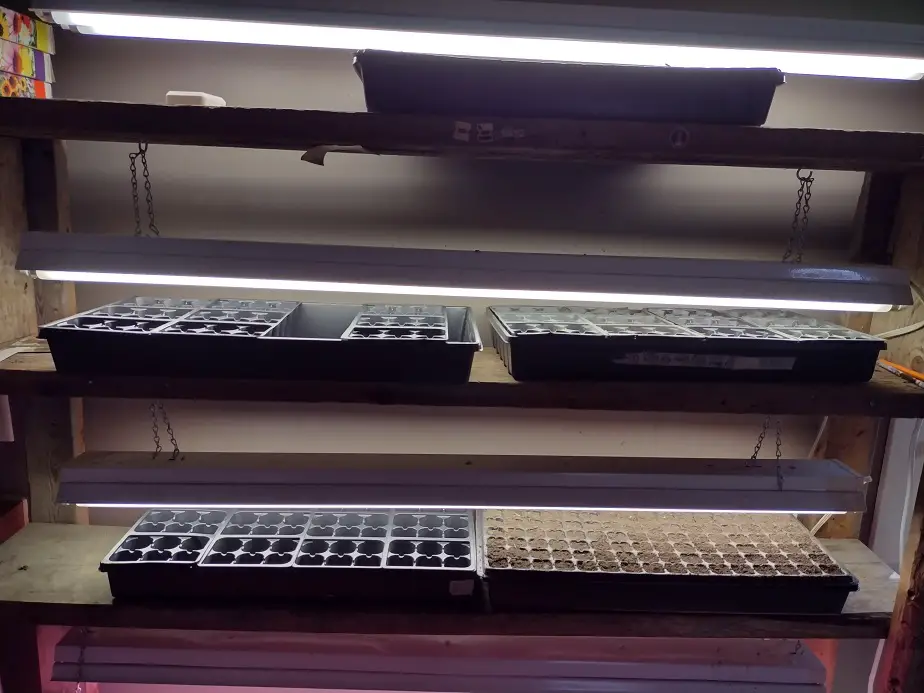Last year, I grew 53 varieties of plants in my garden. Knowing the ideal sowing time is crucial to success.
Most garden crops do well to be planted on June 1 in the southern peninsula and June 10 in the UP. Planting early seldom gives much benefit even if there is no threat of late frost because plants grow slowly in the cooler soil and are more susceptible to disease as seedlings. Sometimes early is okay.
It really depends on what you are planting, what is your soil doing, and what the weather is doing.
Deciding When the Soil is Right for Planting
Whether you’re direct seeding or transplanting, the two factors that affect planting dates are soil temperature and extreme last frost. Soil temperature is really the key to germination, and also impacts seedling health and vigor. A late spring frost just flat-out damages or kills plants.
For every seed, there is a required range for germination. Depending on the seed, it’s somewhere between 60 and 100 degrees. Within the range for each plant variety, there is an optimal range. That’s where is gets tricky.
For example, tomatoes are said to have an extreme minimum germination temperature of 55 degrees. one study claimed 50 degrees. Personally, I can’t grow healthy seedlings when germinated under 64 degrees, and 20 some varieties I’ve grown all do significantly better at 68-70 degrees.
So you need to be aware of the optimal germination temperatures first and foremost. Usually, near the middle of a seed’s germination temperature range, there’s the sweet spot. as you go colder, the germination process slows down. That encourages seed rot and molding and can cause the seed to wear itself out before germination is quite complete.
A tray of slow germinating seeds sprouts at a very uneven rate and displays a low germination rate. If the temperature doesn’t raise soon after germination, the seedlings will struggle, become stunted, and have a lot more disease and dying off problems. I struggled with this a lot before I started working on better practices.
You can also get too hot for certain seeds to grow. Spinach for example tends not to germinate in soils above 74 degrees. Spinach is horrible. It germinates very quickly but very poorly at 65-70 degrees and it germinates very very slowly yet well at the 45-50 degree range. I learned to just accept that.
Last point here, sometimes we commercial growers plant seeds at the bottom of the germination range with the knowledge (and hope) that it will warm up a bit more in enough time to keep the seedling from being stunted. That’s the gambling game. It’s a calculated risk to get produce a week or two earlier.

Soil Temprature for Seed Germination
*This chart is based on reliable agricultural information as well as my personal experience.
| Soil temperature for the germination of common garden crops | The coldest, or maybe too cold | Acceptable Range | The max, or maybe too hot |
| Asparagus | 55 | 60–75 | 90 |
| Bean, lima | 62 | 68-78 | 86 |
| Bean, snap | 60 | 65–85 | 95 |
| Beet | 41 | 50–70 | 80 |
| Cabbage | 43 | 55-70 | 85 |
| Carrot | 40 | 55–70 | 85 |
| Cauliflower | 40 | 55–75 | 90 |
| Celery | 45 | 60–70 | 85 |
| Chard, Swiss | 40 | 55–75 | 95 |
| Corn | 55 | 65–85 | 105 |
| Cucumber | 64 | 67–80 | 104 |
| Eggplant | 64 | 75–85 | 95 |
| Lettuce | 37 | 44-65 | 77 |
| Muskmelon (cantaloupe) | 64 | 75–85 | 100 |
| Okra | 65 | 70–80 | 105 |
| Onion | 35 | 50–75 | 95 |
| Parsley | 41 | 55–75 | 90 |
| Parsnip | 36 | 50–70 | 85 |
| Pea | 44 | 60-70 | 85 |
| Pepper | 66 | 65–80 | 98 |
| Pumpkin | 61 | 65-75 | 100 |
| Potato | 40 | 45-50 | 70 |
| Radish | 40 | 55–75 | 95 |
| Spinach | 38 | 45-55 | 75 |
| Squash | 60 | 65-78 | 100 |
| Sunflower | 40 | 55-65 | 90 |
| Tomato | 61 | 68–80 | 95 |
| Turnip | 40 | 60–75 | 90 |
| Watermelon | 66 | 70–75 | 100 |

What can be Planted Early?
The usual planting time for Michigan is between the end of May and the beginning of June. Planting anything earlier than May 20 would definitely be early. Some crops are quite happy to be planted even earlier than that, even when there’s still snow on the ground. Here are some great examples.
- Beet
- Carrot
- Cauliflower
- Chard
- Lettuce
- Onion (seed and sets)
- Parsnip
- Peas
- Potato
- Radish
- Spinach
- Sunflower
- Turnip
I will plant any of these once the soil has thawed out in the spring, even if there is still a bit of snow here and there and the frost will likely return. Some of them may get damaged a bit by a heavy freeze, but they are pretty hardy at the seedling stage and tend to bounce back very quickly.
Due to uncertain food supply, I planted peas, radish, turnip, and potatoes during the warm snap in February 2020, much like the current January of 2023. Most seeds sent up seedlings by march, then they sat and waited frozen for the weather to warm again in May. It worked and I got an early crop.
Potatoes can be in the soil all winter long. I actually planted a few rows in the fall and they are growing roots right now. when the soil warms up a bit more, probably in April, they will sprout up with a big head start on the growing season. Potato plants are sensitive to frost after about 4 inches tall. I have had them lose half of their leaves to frost but they come back very quickly due to the well-developed root system.
Sunflowers, I don’t intentionally plant them early, but I always see strong seedlings sprouting (from seeds that fell off in the fall) around the flower patch incredibly early, and the frost doesn’t seem to bother them. I usually plant kale in early May. It handles the cold decently.
Chard and lettuce will sprout early and don’t seem to mind a solid frost. Lettuce seedlings are much hardier and can take several freezes. All these plants usually do well planted early, as long as the soil doesn’t get too waterlogged in the spring thaw. I plant them in hilled garden rows for drainage.
You need decently drained soil. And remember that everything grows slower, way slower, in the cold even if it will germinate. Planting a month early may only give you five days worth of additional growth. It’s not always worth it, but it can be. Weigh your options.

What Should not be Planted Early
- Beans
- Cucumbers
- Eggplant
- Melon
- Okra
- Pepper
- Pumpkin (or other squashes)
- Tomato
These crops all need warm soil and can be severely impacted if the soil temperature drops to 55 degrees. Don’t plant them early at all unless the weather being extra warm the whole time is a sure bet. None of these can handle a frost well at all.
Running out to cover all your plants with blankets before a sudden forecasted frost is not fun. Try doing that with 500 tomato plants. These plants should never feel the cold, they don’t like it. Even 60 degree weather is tough on them.
The earliest I would plant any of these by seed or transplant is 60 degrees soil temperature and then only if it’s going to continue to warm up over the next 2 weeks with the threat of frost completely gone for the season. They just don’t do well otherwise. I’ve had too many years fighting the cold. I play smart now.
When transplanting out established seedlings, I’m more apt to put them in 60 degree soil. They’re already doing well and are healthy. They won’t grow much at that temperature but it gives them a brief rest after the transplanting before getting back to growing, as long as the soil will continue to warm up.
Once again, plants grow painstakingly slow when planted early. It’s not until moderately warm, sunny weather that your garden will really start being happy.

Direct Seeding vs Transplanting
When starting seeds indoors, we get to have fun doing things quite early. The only hindrance is the quality of light and the amount of space you have. With good indoor growing conditions, Plants can grow exceptionally fast and well. Usually, indoor plants are started 30-45 days before the intended transplant day.
I start tomatoes and peppers thet earliest, because so many varieties take so very long to mature and ripen. Most tomato plants of mine are started the 1st Sturday in May and and transplanted 1st Saturday of June. I should mention, I’m in the mid lower peninsula, right between USDA zone 5a and 5b.
At 1 month old, the plants are between 4 and 8 inches tall, depending on how well they’ve been cared for. Most varieties are a solid 6-inches over the top of the pot at 30 days (that’s 30 days after emergence). That’s almost 10-inches all together, which is the max (or slightly taller than) my seedling shelves will handle.
I don’t start earlier than that because I can’t handle larger seedlings. At 2 months, a healtby tomato plant should be 14-24 inches tall and have an 8-12 inch wide pot. The same with peppers. For any plant, keeping the temprature in the middle of the acceptable range give the best seedling growth.
Other than tomatoes and pepers, I start vegetables about 2 weeks early. Most things have a short enough growing season that starting much earlier causes them to get too big before transplanting. Young seedlings handle transplanting much beter than old ones.
Melons, cucumbers, amd squashes are quite often started too early. They just get so big so fast, they will end up stunted in little pots very quickly. I like to plan on starting 2 weeks early for cucurbitacea and legumes as long as the temprature is at least 68 degrees. if it’s close to 64 degrees, add a week.
For cold weather crops liker kale, letttuce and beats, be sure to aclimate them to cool tempratures if transplanting them in cold soil. Just set them in a cooler spot of theh house the day before. It helps.
If you have any questions, ask in the comnent section below and I’ll do my best to answer.
Related Articles:

